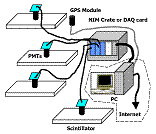Department of Physics and Astronomy: Publications and Other Research

Gregory Snow Publications
Document Type
Article
Date of this Version
2018
Citation
Physics Letters B 776 (2018) 195–216
Abstract
The Fourier coefficients v2 and v3 characterizing the anisotropy of the azimuthal distribution of charged particles produced in PbPb collisions at √sNN = 5.02TeV are measured with data collected by the CMS experiment. The measurements cover a broad transverse momentum range, 1 < pT < 100 GeV/c. The analysis focuses on the pT > 10 GeV/c range, where anisotropic azimuthal distributions should reflect the path-length dependence of parton energy loss in the created medium. Results are presented in several bins of PbPb collision centrality, spanning the 60% most central events. The v2 coefficient is measured with the scalar product and the multiparticle cumulant methods, which have different sensitivities to initial-state fluctuations. The values from both methods remain positive up to pT ∼ 60–80 GeV/c, in all examined centrality classes. The v3 coefficient, only measured with the scalar product method, tends to zero for pT [?] 20 GeV/c. Comparisons between theoretical calculations and data provide new constraints on the path-length dependence of parton energy loss in heavy ion collisions and highlight the importance of the initial-state fluctuations.


Comments
© 2017 The Author.
Open access
https://doi.org/10.1016/j.physletb.2017.11.041